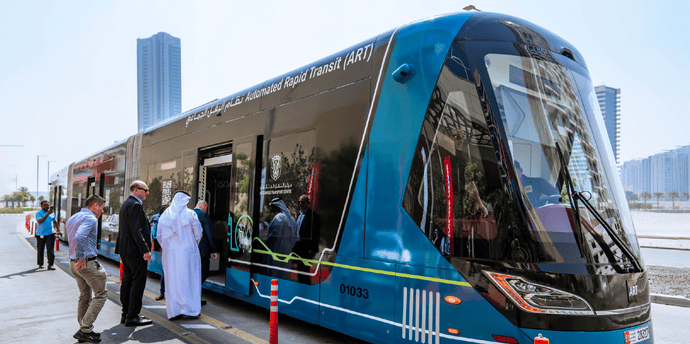Public Transport in the UAE: Progress, Challenges, and Future Prospects
The United Arab Emirates (UAE) has made significant strides in developing a modern, efficient, and sustainable public transport system. With its rapid urbanization and growing population, the country has invested heavily in infrastructure to provide world-class mobility solutions. This article explores the current state of public transportation in the UAE, the challenges it faces, and potential improvements for the future. Current State of Public Transport Public transportation in the UAE is well-developed in major cities such as Dubai and Abu Dhabi, with ongoing efforts to enhance connectivity across the country. The primary modes of public transport include: Metro Systems: Dubai Metro, the first automated metro system in the region, is a key component of the city's transport network. Abu Dhabi is also planning its metro system to enhance urban mobility. Buses: A widespread bus network operates across all emirates, providing affordable and convenient transport options for residents and visitors. Trams: The Dubai Tram serves key locations such as Dubai Marina and JBR, offering a seamless connection to the metro system. Taxis and Ride-Sharing Services: Taxis are a popular mode of transport, with ride-hailing services like Uber and Careem providing additional convenience. Marine Transport: Ferries and water taxis operate in Dubai, offering an alternative mode of travel across waterways. Rail and Future Projects: The Etihad Rail project aims to connect major cities and industrial zones, improving freight and passenger transport across the UAE. Challenges Facing Public Transport in the UAE Despite its modern infrastructure, public transport in the UAE faces several challenges: Car Dependency: Many residents prefer private cars due to the country’s high car ownership rate and extensive road networks. Extreme Weather Conditions: The hot climate, especially during summer, can make walking and waiting for public transport challenging. Limited Coverage in Some Areas: While Dubai and Abu Dhabi have extensive networks, some other emirates still lack comprehensive public transport options. Traffic Congestion: Despite investments in public transport, road congestion remains an issue, particularly in major cities. Integration Between Transport Modes: Improving seamless connectivity between metro, bus, and other transport services is essential for enhancing efficiency. Future Prospects and Developments To address these challenges, the UAE is investing in innovative transport solutions and infrastructure upgrades: Expansion of the Metro and Rail Network: Dubai Metro’s expansion and the upcoming Abu Dhabi Metro will further enhance urban connectivity. Sustainable Transport Initiatives: The UAE is focusing on electric and autonomous vehicles, with plans to introduce more eco-friendly public transport options. Smart Mobility Solutions: Digital integration, real-time tracking, and contactless payment systems are being enhanced to improve user experience. Hyperloop and Advanced Transport Technologies: The UAE is exploring cutting-edge technologies such as the Hyperloop, which could revolutionize long-distance travel. Improved Public Awareness Campaigns: Encouraging the use of public transport through awareness programs and incentives can help reduce car dependency. Conclusion Public transport in the UAE is evolving rapidly, with significant investments in metro, rail, and smart mobility solutions. While challenges remain, the country’s commitment to innovation and sustainability will ensure a world-class transport system in the future. By expanding coverage, enhancing integration, and promoting sustainable travel, the UAE aims to create a more accessible and efficient public transportation network for residents and visitors alike.
3/29/20251 min read


My post content
